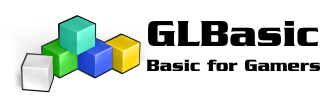I think that Bada would be a better option.
The problem with Symbian is such that the most of devices (even now sold with this system) are old type old phones - nontouch small screen, keyboard/numpad, and are intended for 'emerging markets', and most common used dev language is Java - due to differences in phones and issues with publishing. Of course there are normal touch phones, but only few models have hardware acceleration and support for OpenGL (around a dozen models). When it goes to numbers, Nokia informs that there is around 155 milions of QT devices (not all Symbian just newer -> Symbian S60 and MeeGo.. 3 categories: new touch with OpenGL - N8/N9, older touch without gpu like Nokia 5800 and classic models like E65) but in true there is probably more classic phones than a touch devices. As a reminder I will say that Samsung in 2011 has sold more over 300 milions smartphones (mostly on android).
But on other hand for better devices most of top games is made by 'big companies', small dev studios are mainly focused on java games that will work on older phones, and many such games have crazy prices like $3 for tic tac toe. But to get really big impact our games should work on all touch devices not only these with gpu, that would be hard to do :/ For devices with gpu there is QtGameEnabler solution that as they said make developing simpler. Never tried cause I have Nokia 5530 without gpu :>
Aaa.. I almost forgot about it.. in Ovi/Nokia Store you can't publish games to South Korea Oo.. and self publish to China - you need some intermediary or as they tell an 'accumulator', that takes most of you earnings from that market ;]
About Bada. it's growing market, but also here not all devices have gpu so I don't know how fast games work on such phones (on Symbian phones without gpu you can't run opengl games, they just dosn't start). But there are also Smart Tv based on bada or something similar and they also could be the market for us.. Bada is more uniform system than Symbian
The problem with Symbian is such that the most of devices (even now sold with this system) are old type old phones - nontouch small screen, keyboard/numpad, and are intended for 'emerging markets', and most common used dev language is Java - due to differences in phones and issues with publishing. Of course there are normal touch phones, but only few models have hardware acceleration and support for OpenGL (around a dozen models). When it goes to numbers, Nokia informs that there is around 155 milions of QT devices (not all Symbian just newer -> Symbian S60 and MeeGo.. 3 categories: new touch with OpenGL - N8/N9, older touch without gpu like Nokia 5800 and classic models like E65) but in true there is probably more classic phones than a touch devices. As a reminder I will say that Samsung in 2011 has sold more over 300 milions smartphones (mostly on android).
But on other hand for better devices most of top games is made by 'big companies', small dev studios are mainly focused on java games that will work on older phones, and many such games have crazy prices like $3 for tic tac toe. But to get really big impact our games should work on all touch devices not only these with gpu, that would be hard to do :/ For devices with gpu there is QtGameEnabler solution that as they said make developing simpler. Never tried cause I have Nokia 5530 without gpu :>
Aaa.. I almost forgot about it.. in Ovi/Nokia Store you can't publish games to South Korea Oo.. and self publish to China - you need some intermediary or as they tell an 'accumulator', that takes most of you earnings from that market ;]
About Bada. it's growing market, but also here not all devices have gpu so I don't know how fast games work on such phones (on Symbian phones without gpu you can't run opengl games, they just dosn't start). But there are also Smart Tv based on bada or something similar and they also could be the market for us.. Bada is more uniform system than Symbian


